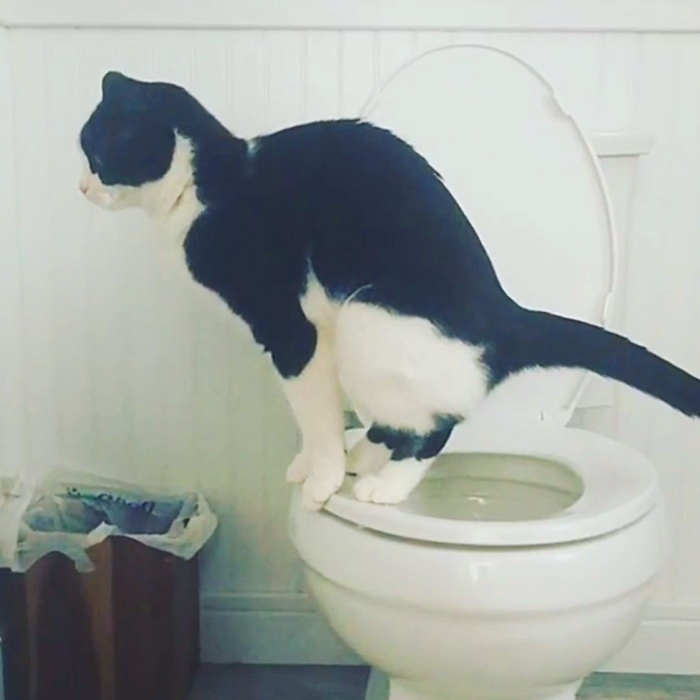The Dangers of Flushing Cat Poop Down Your Toilet - Advice for Better Disposal
The Dangers of Flushing Cat Poop Down Your Toilet - Advice for Better Disposal
Blog Article
Were you trying to find information about Don’t flush cat feces down the toilet?

Intro
As feline proprietors, it's essential to be mindful of how we throw away our feline buddies' waste. While it may seem convenient to purge pet cat poop down the bathroom, this practice can have destructive effects for both the setting and human health and wellness.
Environmental Impact
Flushing feline poop introduces unsafe pathogens and parasites right into the water, posing a considerable danger to marine communities. These contaminants can adversely impact marine life and concession water top quality.
Health and wellness Risks
In addition to ecological issues, purging pet cat waste can additionally pose wellness threats to human beings. Feline feces might include Toxoplasma gondii, a bloodsucker that can create toxoplasmosis-- a possibly extreme disease, especially for pregnant ladies and people with damaged body immune systems.
Alternatives to Flushing
Fortunately, there are much safer and a lot more liable means to get rid of feline poop. Take into consideration the complying with choices:
1. Scoop and Dispose in Trash
The most common technique of taking care of pet cat poop is to scoop it right into a biodegradable bag and throw it in the trash. Make certain to use a dedicated clutter scoop and get rid of the waste immediately.
2. Usage Biodegradable Litter
Go with eco-friendly pet cat trash made from products such as corn or wheat. These trashes are eco-friendly and can be securely taken care of in the garbage.
3. Hide in the Yard
If you have a yard, consider hiding cat waste in an assigned area far from veggie gardens and water sources. Make sure to dig deep adequate to prevent contamination of groundwater.
4. Install a Pet Waste Disposal System
Invest in an animal waste disposal system specifically developed for feline waste. These systems make use of enzymes to break down the waste, lowering smell and environmental effect.
Conclusion
Accountable pet possession extends past supplying food and shelter-- it likewise involves correct waste monitoring. By avoiding flushing pet cat poop down the bathroom and selecting alternate disposal techniques, we can minimize our ecological footprint and protect human wellness.
Why Can’t I Flush Cat Poop?
It Spreads a Parasite
Cats are frequently infected with a parasite called toxoplasma gondii. The parasite causes an infection called toxoplasmosis. It is usually harmless to cats. The parasite only uses cat poop as a host for its eggs. Otherwise, the cat’s immune system usually keeps the infection at low enough levels to maintain its own health. But it does not stop the develop of eggs. These eggs are tiny and surprisingly tough. They may survive for a year before they begin to grow. But that’s the problem.
Our wastewater system is not designed to deal with toxoplasmosis eggs. Instead, most eggs will flush from your toilet into sewers and wastewater management plants. After the sewage is treated for many other harmful things in it, it is typically released into local rivers, lakes, or oceans. Here, the toxoplasmosis eggs can find new hosts, including starfish, crabs, otters, and many other wildlife. For many, this is a significant risk to their health. Toxoplasmosis can also end up infecting water sources that are important for agriculture, which means our deer, pigs, and sheep can get infected too.
Is There Risk to Humans?
There can be a risk to human life from flushing cat poop down the toilet. If you do so, the parasites from your cat’s poop can end up in shellfish, game animals, or livestock. If this meat is then served raw or undercooked, the people who eat it can get sick.
In fact, according to the CDC, 40 million people in the United States are infected with toxoplasma gondii. They get it from exposure to infected seafood, or from some kind of cat poop contamination, like drinking from a stream that is contaminated or touching anything that has come into contact with cat poop. That includes just cleaning a cat litter box.
Most people who get infected with these parasites will not develop any symptoms. However, for pregnant women or for those with compromised immune systems, the parasite can cause severe health problems.
How to Handle Cat Poop
The best way to handle cat poop is actually to clean the box more often. The eggs that the parasite sheds will not become active until one to five days after the cat poops. That means that if you clean daily, you’re much less likely to come into direct contact with infectious eggs.
That said, always dispose of cat poop in the garbage and not down the toilet. Wash your hands before and after you clean the litter box, and bring the bag of poop right outside to your garbage bins.
https://trenchlesssolutionsusa.com/why-cant-i-flush-cat-poop/

I was made aware of that report on Can You Flush Cat Poo or Litter Down the Toilet? from an associate on a different web property. If you enjoyed our page if you please do not forget to pass it around. I am grateful for your time. Visit again soon.
Click Here Report this page